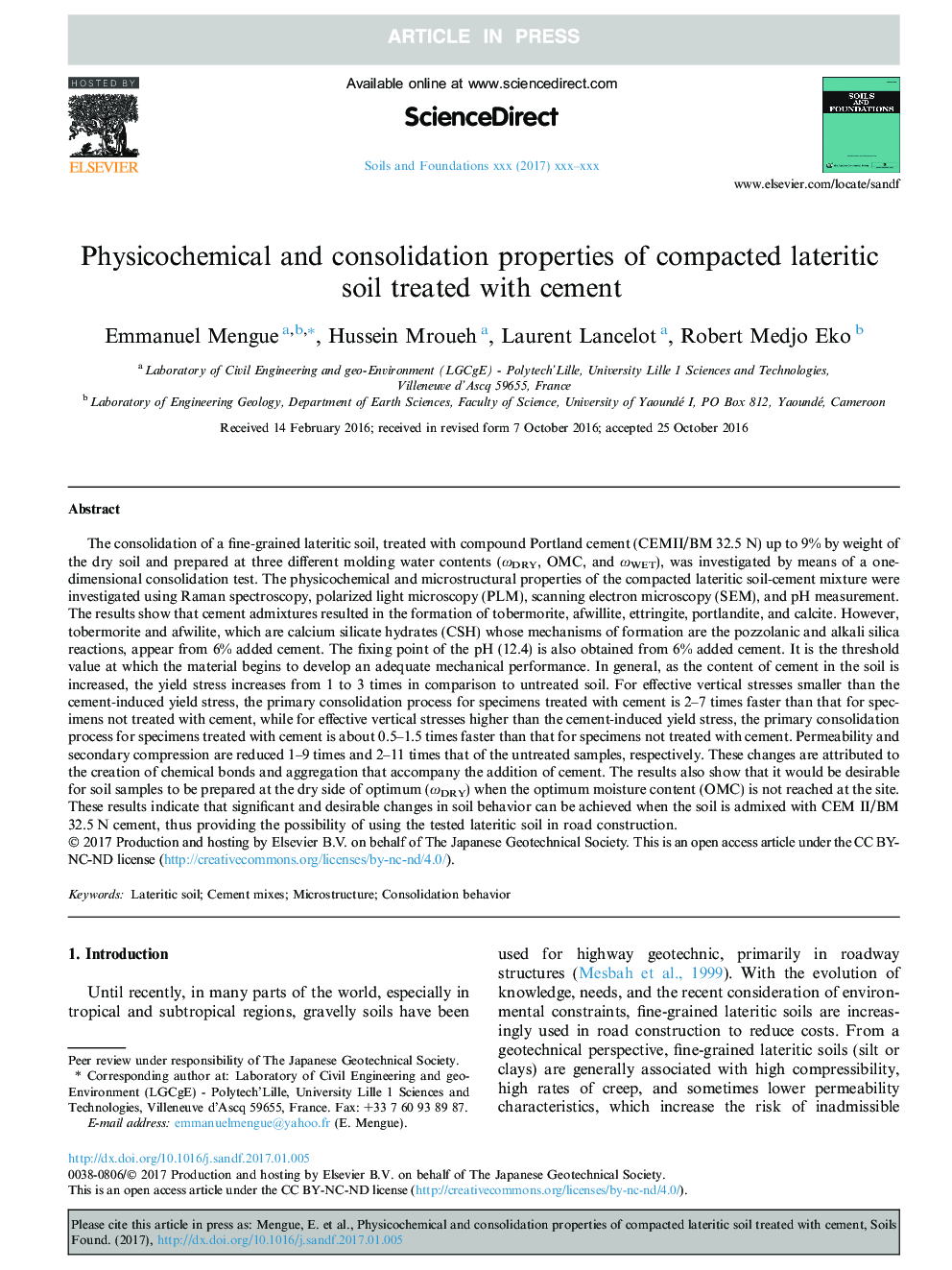| Article ID | Journal | Published Year | Pages | File Type |
|---|---|---|---|---|
| 4927687 | Soils and Foundations | 2017 | 20 Pages |
Abstract
The consolidation of a fine-grained lateritic soil, treated with compound Portland cement (CEMII/BM 32.5Â N) up to 9% by weight of the dry soil and prepared at three different molding water contents (ÏDRY, OMC, and ÏWET), was investigated by means of a one-dimensional consolidation test. The physicochemical and microstructural properties of the compacted lateritic soil-cement mixture were investigated using Raman spectroscopy, polarized light microscopy (PLM), scanning electron microscopy (SEM), and pH measurement. The results show that cement admixtures resulted in the formation of tobermorite, afwillite, ettringite, portlandite, and calcite. However, tobermorite and afwilite, which are calcium silicate hydrates (CSH) whose mechanisms of formation are the pozzolanic and alkali silica reactions, appear from 6% added cement. The fixing point of the pH (12.4) is also obtained from 6% added cement. It is the threshold value at which the material begins to develop an adequate mechanical performance. In general, as the content of cement in the soil is increased, the yield stress increases from 1 to 3 times in comparison to untreated soil. For effective vertical stresses smaller than the cement-induced yield stress, the primary consolidation process for specimens treated with cement is 2-7 times faster than that for specimens not treated with cement, while for effective vertical stresses higher than the cement-induced yield stress, the primary consolidation process for specimens treated with cement is about 0.5-1.5 times faster than that for specimens not treated with cement. Permeability and secondary compression are reduced 1-9 times and 2-11 times that of the untreated samples, respectively. These changes are attributed to the creation of chemical bonds and aggregation that accompany the addition of cement. The results also show that it would be desirable for soil samples to be prepared at the dry side of optimum (ÏDRY) when the optimum moisture content (OMC) is not reached at the site. These results indicate that significant and desirable changes in soil behavior can be achieved when the soil is admixed with CEM II/BM 32.5Â N cement, thus providing the possibility of using the tested lateritic soil in road construction.
Related Topics
Physical Sciences and Engineering
Earth and Planetary Sciences
Geotechnical Engineering and Engineering Geology
Authors
Emmanuel Mengue, Hussein Mroueh, Laurent Lancelot, Robert Medjo Eko,
